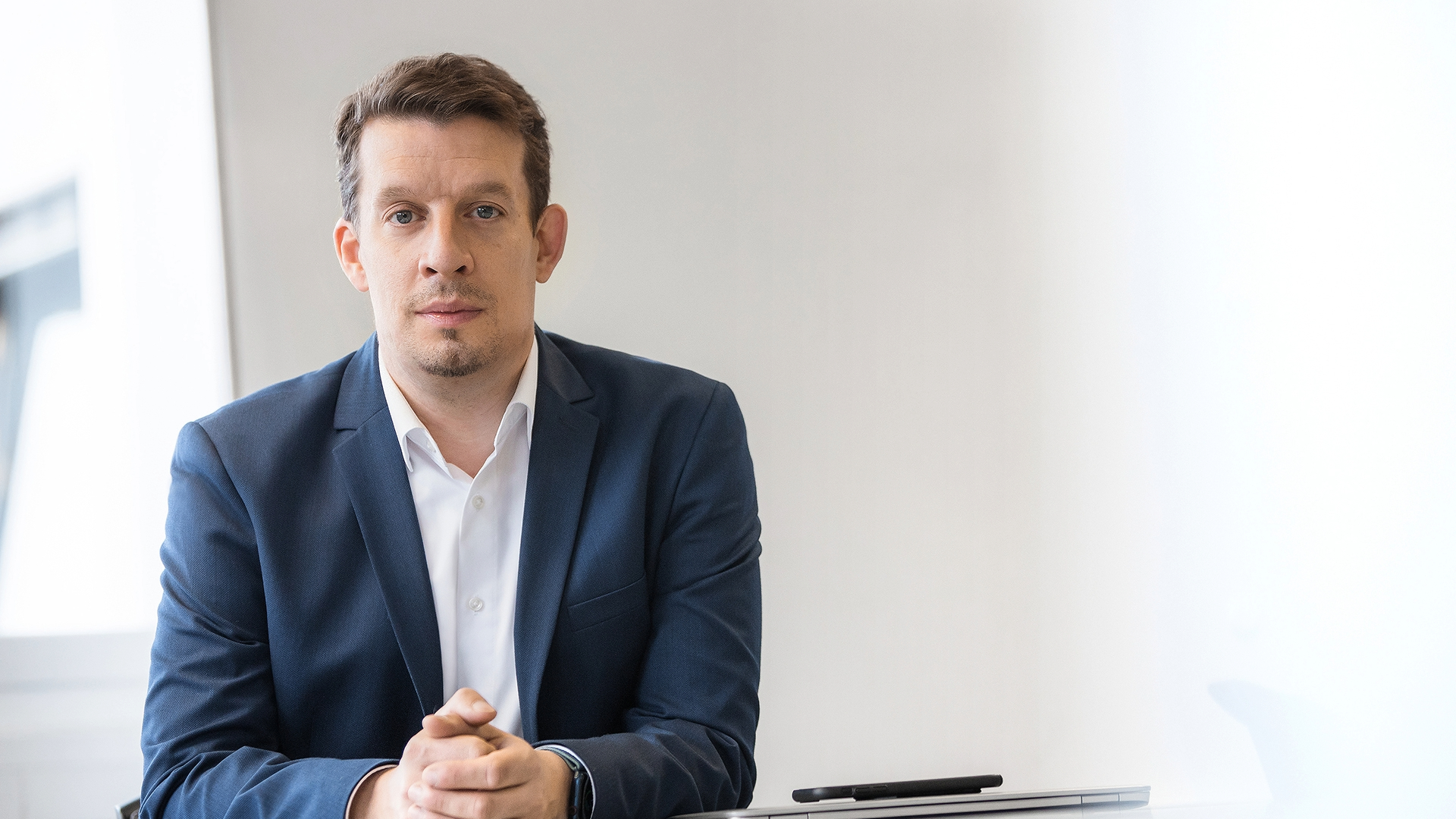Fabienne Lupo, President of the Fondation de la Haute Horlogerie, confirms that growth opportunities remain for Haute Horlogerie in 2015
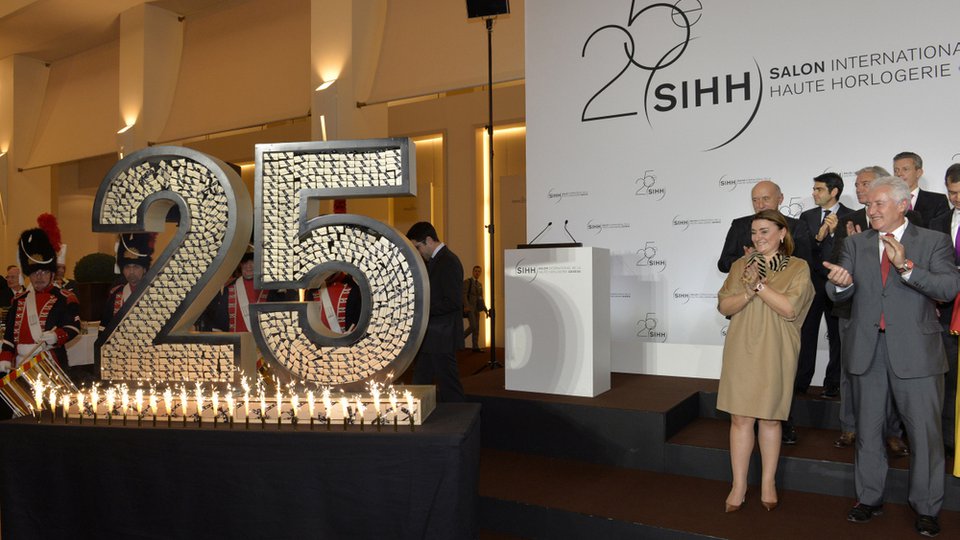
Fabienne Lupo, President of the Fondation de la Haute Horlogerie, confirms that growth opportunities remain for Haute Horlogerie in 2015
Four days before the 2015 Salon International de la Haute Horlogerie opened in Geneva, the Swiss National Bank abruptly removed an exchange rate ceiling it had placed against the struggling Euro. In just a few short days, the Swiss Franc increased in value by over 20% against the Euro and over 15% against the dollar.
The question for watchmakers was one of pricing. As the value of the Swiss Franc continued to mount, the cost of export to Eurozone markets and the United States inevitably also rose, calling into question pricing strategies set for debut on the 19th January at the fair. Who would absorb the increase? The customer? Or the margin?
The Swiss Bank announcement certainly gave the crowd at SIHH something to talk about, but it didn’t seem to dampen anyone’s spirits. The clientele for Haute Horlogerie, it was repeated explained to me, were the least likely segment of consumers to base their purchasing decision on a price fluctuation of one- or two-thousand euros.
Here, craftsmanship, creativity and complication reign supreme. We sat down with Fabienne Lupo, President of the Fondation de la Haute Horlogerie, to better understand where the industry could be headed in 2015.
“ The Swiss Bank announcement gave the crowd at SIHH something to talk about ”
What are some of the Fondation de la Haute Horlogerie’s key objectives for 2015?
The mission of the Fondation is to raise awareness about fine watch making worldwide, via education and training. And in 2015 we will continue to be the absolute reference in the industry with our digital tools; our website, our online magazine, and of course our exhibitions.
We will present The Mastery of Time at the World Exhibition in Milan, retracing the history of fine watch making since the very beginning to the present day, which will accompany the book of the same name, and it’s translation in Italian.
We will also continue to focus on education and training, to raise the level of fine watchmaking culture and knowledge in the world. For that mission we have a specific tool that we will launch. We will just have launched it in the United States in New York at the beginning of January.
“ Despite the headlines, brand executives remained confident throughout the fair ”
The 2012 Salon International de la Haute Horlogerie opened to a whirlwind of controversy regarding the Swiss Franc. How did this affect the mood during the week?
Despite the headlines, the mood was quite good. Brands and executives remained confident throughout the fair despite the fact that the global economic situation is quite unclear. Swiss Watch Exports reached another record in 2014 (22.2b CHF) signalling another year of growth, albeit at a smaller percentage.
Essentially, SIHH is a trade fair. It’s a private and professional show. The target is really retailers and journalists from all over the world, which has remained stable for several years.
We were happy to welcome around 14 to 15,000 visitors over the course of the five days, which is consistent with previous years.
We consider SIHH to be a global showcase for fine watchmaking. All the retailers, all the international journalists come to visit us in Switzerland, which is a cradle of fine watch making. People take the opportunity to be there to visit the manufacturer and to meet with watchmakers and artisans.
So no matter what the headlines or the currency fluctuations, we know that the SIHH in Geneva remains one of the most important dates in the calendar
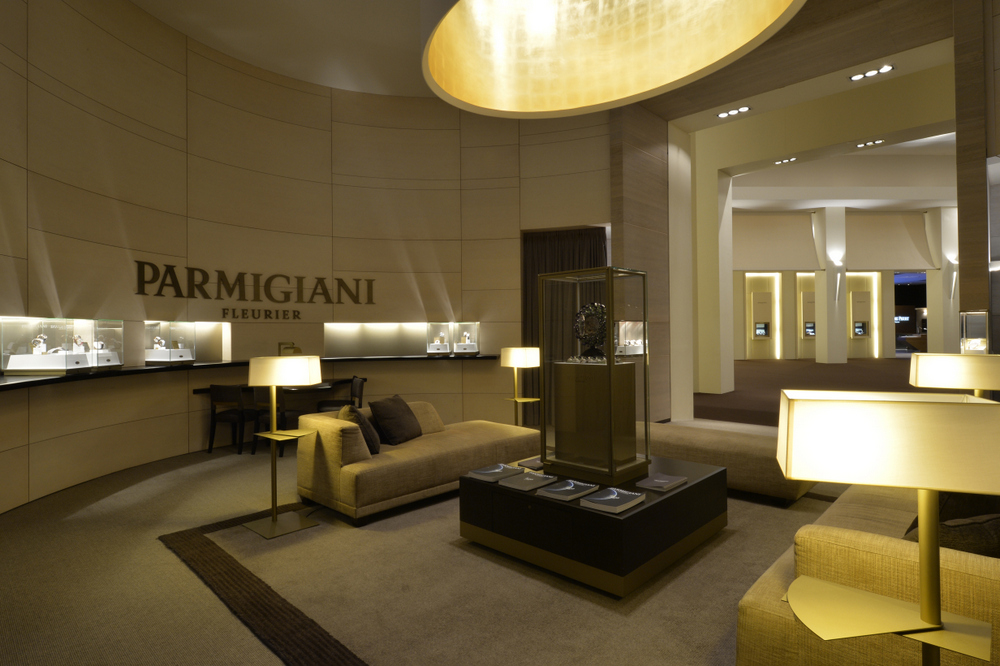
Parmigiani at SIHH
And what are your plans for Watches & Wonders in Hong Kong?
Watches & Wonders is very much an additional event. It’s another story as we say. SIHH is a professional show dedicated to the retailer and the press. It’s the international showcase of fine watchmaking where brands present their latest innovations, new collections and what they will be delivering to the markets in the future.
Watches & Wonders is an event specifically conceived for the Asian region. The target is the end customer, supplier, the VIPs, to be able to demonstrate in person the craftsmanship and artistry that goes into these incredible timepieces.
It’s much more about culture, about presenting the history, the patrimony and of course of some of the brands. It’s more about having an experience than a business fair.
Can you envision taking this type of concept anywhere else?
Increasingly it is an important fair but we cannot underestimate the investment by each brand. For the time being we really would like to continue to build this show in Hong Kong, as a key destination for the entire Asian region including Australia. But for the time being we don’t have any plans to stage this somewhere else. But maybe one day.
“ Watches & Wonders is an event specifically conceived for the Asian region ”
Can you tell us some more The HH Certificate? An International Certification Of Watchmaking Knowledge?
This is essentially a way for the industry to evaluate the level of knowledge and watchmaking culture of individuals. Whether it is to do with complications, manufacture, materials or design, there is now what we consider to be almost a proficiency test.
This kind of test already exists for instance for gemmology, by the Gemological Institute of America. The idea is to have a similar benchmark style test for watchmaking, so if you want to hire someone to work in your flagship you can evaluate the level of knowledge.
Brands will be able to ask watch professionals for their HH Certification and level, whereby the test is conducted by the Fondation. We have been building this test for nearly four years, composed by experts, retailers, and journalists.
Candidates are tested on technique, materials, history, brands and markets, leveraging around 2,600 different questions, already available in French and English. The test takes two hours and asks 160 questions. We then worked with experts in docimology (the theory of the art of testing), to turn these scores into a certification of knowledge.
“ Candidates are tested on technique, materials, history, brands and markets ”
One of the assumptions I have is that the majority of serious watch collectors are Baby Boomers. How can Haute Horlogerie ensure that the passion for fine watchmaking is understood by Millennials?
That’s a big challenge. And something we discussed at length at our annual Fine Watchmaking Forum held at IMD in Lausanne – what is the perception of Haute Horlogerie for the younger generation? What do they want? What do they need? What do they look for?
I don’t know if anyone has the answer yet. But I think we definitely have to engage this generation and share with them the craft and enjoyment that is fine watchmaking. And I think now that you cannot achieve resonance without the help of social media or digital media or creating some kind of community.
For this reason we see more and more traditional watchmakers leveraging social media to explain who they are and share the kind of work that they do, so that people can fall in love with these exceptional pieces. And understand what they represent far beyond the monetary investment.
It really is a question of education, but to be able to educate the younger generation we need to join them where they are engaged, which is perhaps not the same channels that the industry has always depended on.
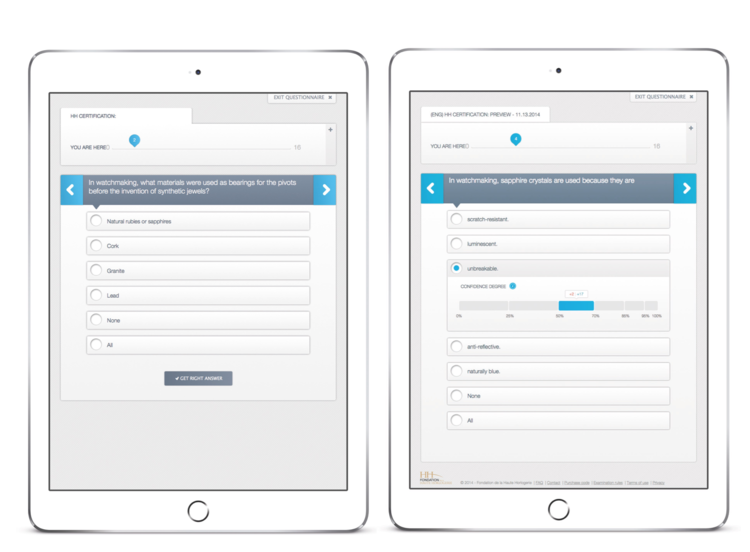
Testing for the HH Certificate
What about the products themselves? Haute Horlogerie generally has quite a timeless design ethos. But we have seen great success by brands such as Richard Mille or Hublot with younger consumers, giving them some bolder design options. How much should watchmakers adapt their DNA to this new audience?
It’s difficult, really. I don’t know. Today we are talking about our also to the connected watch. Will this become a real competitor of the traditional watch? The competition is almost more related to real estate on the wrist, than the product itself, because it will inevitably depend on the functionality.
Because if the object that you put on your wrist can help you to open your door, start your car, warn you that you are coming down with the flu or that you need to hydrate – or whatever it may be – maybe consumers will put this on their wrists every day instead of a traditional watch.
But until these innovations are unveiled its difficult to speculate just how useful these new Smartwatches will be, and whether or not they have the functionality to really replace the traditional watch. And in terms of the design I cannot answer. This decision has to lie in the hands of the brand and what is best aligned to its own strategy.
“ The Smartwatch competition is really related to real estate on the wrist ”
One of the biggest discussions in 2014 was the opportunity for women’s complications. That perhaps growth in the women’s category could offset slowed growth in emerging markets. Do you still feel that there’s a big opportunity there?
I do believe there is an opportunity, especially in Asia. There are more and more powerful woman in Asia, especially in China. Women in Asia are more and more interested in complicated watches and above all they want value for their money.
They want to understand what they buy. It’s a status symbol to have something not only with diamonds but a real watch with real complications. That is a big part of the cake and the business with women. I’m confident that as there will be more choice for complications from the manufacturers, we will see more women purchasing.
“ Women in Asia are more and more interested in complicated watches ”
We touched briefly on the Swiss Franc, but I would be interested to know what impact you think it could have on the industry in 2015?
I think realistically it is too early to say exactly what will happen and I certainly don’t claim to be an economist. For the price range on display at SIHH I’m not sure that these are the most price sensitive consumers, but we never know.
I think it is reasonable to expect price increases, especially for the Eurozone. Some brands told me as SIHH opened that they had already increased their Euro price to hedge against the Swiss Bank’s unexpected decision.
What I do believe is that creativity will be the response to this difficult economic situation. And that we can count on the creativity of all these amazing brands to continue to inspire and delight their customers to keep the segment moving forward.
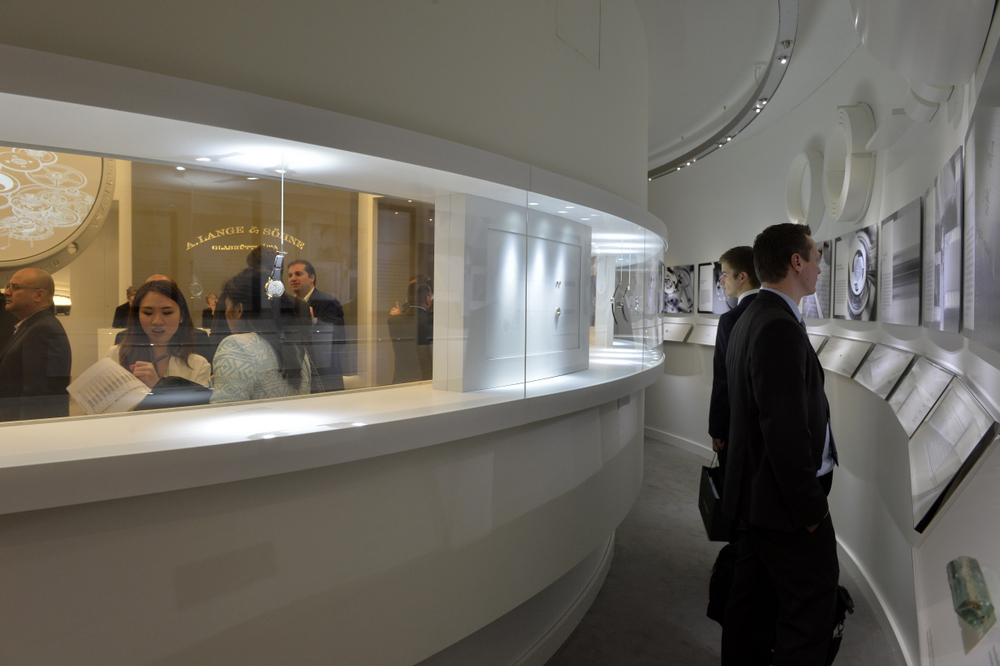
A. Lange & Söhne at SIHH
Aside from economic malaise, what will be the key challenges do you think that the Haute Horlogerie segment will face this year?
I think the main challenge will remain the economy, but also wealth. At the same time as SIHH I read some literature from Davos that suggested that by next year, 1% of the population will own 99% of the world’s wealth. Which is a precarious situation for the wealthy.
And essentially our clients here are this 1%. So it becomes an ethical challenge for our industry to continue to tell these beautiful stores but to do so in a socially responsible way. It will not be sufficient to create complicated product and sell it at a high price and leave it at that. Brands will need to face the ethical issues that accompany the price of their products.
“ Essentially the clients for Haute Horlogerie are the 1% ”
Do you think that there’s any one big opportunity that these watch makers should be trying to seize this year? Can the industry continue to grow?
I believe that the industry can continue to grow. If we use the figure of 21 million timepieces exported in Switzerland, it is a small percentage of the world’s population of over 7 billion people. There still remain big opportunities because many people in the world do not know about fine watchmaking.
So when you consider the population, and even just the smaller affluent population, it is still a small figure. The scale, the potential of growing, it’s quite huge, especially in the United States, in South America, India, even China. There is a huge growth potential and I believe that the industry will continue to seize the opportunity.
To further investigate timepieces on Luxury Society, we invite you to explore the related materials as follows:
– Women’s Fashion Watches, A World of Opportunity
– In Conversation With Aurel Bacs, President, Grand Prix d’Horlogerie de Genève
– The Apple Watch Fails to Revolutionise the Swiss Watch Industry










